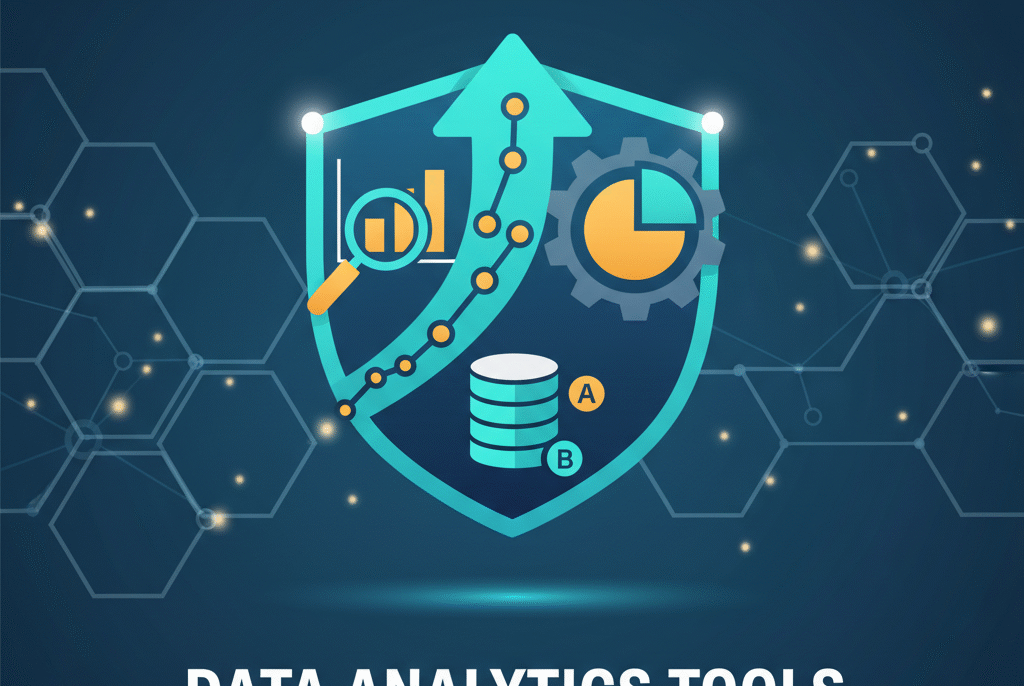Welcome to The Ultimate Guide to Data Analytics Tools. This guide will help you understand and choose the best data analytics tools for your needs.
Criteria for Selecting a Data Analytics Tool
Data science is a rapidly evolving industry. New software and tools, including data analytics tools, are launching daily. With such a vibrant ecosystem, choosing the right tools can be challenging, especially if you are a newcomer in data science.
Like any toolbox, no tool is best in absolute terms to address all the problems you will face as a data analyst. Instead, the key is having a complete and balanced set of tools to help you succeed in every scenario.
Every case is different, and you or the company you work for must consider several factors to find the best fit for your needs. Below, you can find a list of factors you should assess before choosing your data analytics tools:
Identifying Business Needs
This is probably the most important factor. While it’s important to ask yourself what tools you want to learn and what tools you like the most, you should never forget to ask what your company –or the company you would love to work in– needs. This makes sense: if the rest of the team uses Python, learning R first may not be the smartest decision.
At the same time, you should always keep an eye on recent trends and cutting-edge data technologies so you can learn them and increase your value in the team.
Scalability And Flexibility
The big data landscape has changed dramatically in the last few years. Today, data-driven companies deal with massive amounts of data in varying formats that are often processed in near real time.
Against this backdrop, scalability and flexibility are crucial for success. The data science technology landscape is rapidly growing, with many tools and applications specifically designed to address the challenges of increasing data volume, velocity, and variability. Hence, when choosing your tools, always consider how much flexibility and scalability you or your team need.
Ease Of Use And Learning Curve
The ease of use and complexity of data analytics tools vary considerably. The more features and advanced capabilities, the steeper the learning curve. By contrast, simpler data analytics tools are better suited for non-technical users, who will be able to get started quickly.
Top Data Analytics Tools
Here are some of the top data analytics tools that professionals use today:
- Tableau: A powerful and intuitive data visualization tool. It helps people see and understand their data.
- Google Analytics: A web analytics service. It tracks and reports website traffic.
- Microsoft Power BI: A business analytics solution. It lets you visualize your data and share insights across your organization.
- SAS: A software suite. It offers advanced analytics, multivariate analysis, business intelligence, and data management.
- Apache Hadoop: An open-source software framework. It helps process large datasets across clusters of computers.
- R: A programming language. It is used for statistical computing and graphics.
- Python: A high-level, interpreted programming language. It is often used for data analysis and machine learning.
Comparing Data Analytics Tools
| Tool | Best For | Pros | Cons |
|---|---|---|---|
| Tableau | Data Visualization | Intuitive, interactive dashboards, real-time data | Expensive, can be complex for beginners |
| Google Analytics | Website Traffic Analysis | Free, easy to use, integrates with other Google services | Limited to web data, not suitable for complex data analysis |
| Microsoft Power BI | Business Analytics | Affordable, integrates with Microsoft products, easy to use | Limited customization, performance issues with large datasets |
| SAS | Advanced Analytics | Comprehensive, scalable, strong support | Expensive, steep learning curve |
| Apache Hadoop | Big Data Processing | Scalable, open-source, handles large datasets | Complex to set up and manage, requires programming knowledge |
| R | Statistical Computing | Free, extensive libraries, strong community | Steep learning curve, slower than some alternatives |
| Python | Data Analysis and Machine Learning | Versatile, easy to learn, extensive libraries | Can be slow for heavy computation, requires programming knowledge |
Frequently Asked Questions
What Are Top Data Analytics Tools?
Top tools include Tableau, Power BI, Google Analytics, and SAS. Each has unique strengths for specific needs.
Why Use Data Analytics Tools?
They help analyze large datasets, identify trends, and make informed business decisions. These tools enhance efficiency and accuracy.
How To Choose A Data Analytics Tool?
Consider business needs, scalability, ease of use, and integration capabilities. Evaluate each tool’s features and your team’s expertise.
Are Free Data Analytics Tools Reliable?
Yes, many free tools like Google Analytics are reliable. They offer robust features but may have limitations compared to paid versions.
Conclusion
Choosing the right data analytics tools depends on your specific needs. Always consider the factors mentioned above before making a decision.
For more information on data analytics tools, visit The Ultimate Guide to Data Analytics Tools.



